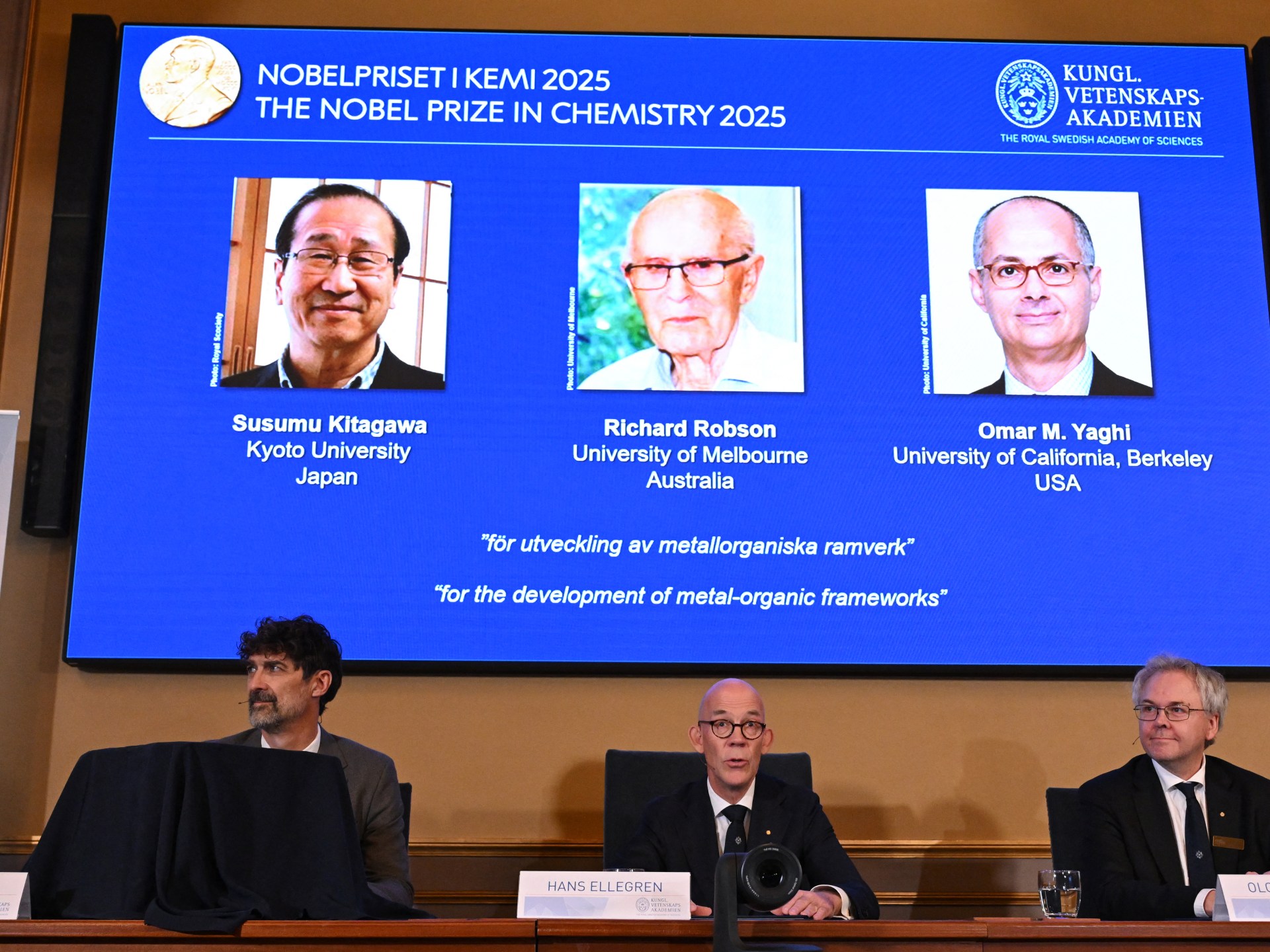The Royal Swedish Academy of Sciences has awarded the 2025 Nobel Prize in chemistry to Susumu Kitagawa, Richard Robson and Omar M Yaghi for their work in the development of metal-organic frameworks (MOF).
The three scientists, who won the award on Wednesday, come from the universities of Kyoto in Japan, Melbourne in Australia and Berkeley in the United States, respectively.
Recommended Stories
list of 3 itemsend of list
The three have created “molecular constructions with large spaces through which gases and other chemicals can flow”, read a statement from the Nobel Prize. Such constructions can be used to harvest water from desert air, capture carbon dioxide, store toxic gases or brake down traces of pharmaceuticals in the environment.
“Metal-organic frameworks have enormous potential, bringing previously unforeseen opportunities for custom-made materials with new functions,” said Heiner Linke, chair of the Nobel Committee for Chemistry.
According to Olof Ramström, a member of the Nobel Committee for Chemistry, the new form of molecular architecture can be compared to the handbag of fictional Harry Potter character Hermione Granger: small on the outside but very large on the inside.
The chemists, working separately but adding to each other’s breakthroughs, devised ways to make stable metal organic frameworks — which may be compared to the timber framework of a house.
These structures can absorb and contain gases inside these frameworks, with many practical applications today — such as capturing carbon dioxide from the atmosphere or sucking water out of dry desert air.
The first step into what would have been a decades-long journey was in 1989 when Robson tested atoms’ properties in a new way, combining positively charged copper ions with a four-armed molecule. This had a chemical group that was attracted to copper ions at the end of each arm, reads a description in the Nobel Prize’s statement.
When they were combined, they formed a shape similar to a diamond filled with cavities. But the crystal would collapse easily. That is when Kitagawa and Yaghi entered the frame. Working separately between 1992 and 2003, they made a series of discoveries to make the metal frameworks stable. Kitagawa showed that they could be made flexible while Yaghi discovered that they can be modified using rational design.
The 2024 prize was awarded to David Baker, a biochemist at the University of Washington in Seattle, and to Demis Hassabis and John Jumper, computer scientists at Google DeepMind, a British-American artificial intelligence (AI) research laboratory based in London.
The three were awarded for discovering powerful techniques to decode and design novel proteins, the building blocks of life. Their work used advanced technologies, including AI, and can potentially transform how new drugs and other materials are made.
The first Nobel of 2025 was announced Monday. The prize in medicine went to Mary E. Brunkow, Fred Ramsdell and Dr. Shimon Sakaguchi for their discoveries concerning peripheral immune tolerance.
Tuesday’s physics prize went to John Clarke, Michel H. Devoret and John M. Martinis for their research on the weird world of subatomic quantum tunneling that advances the power of everyday digital communications and computing.
This year’s Nobel announcements continue with the literature prize Thursday. The Nobel Peace Prize will be announced Friday and the economics prize next Monday.
Source: Aljazeera

Leave a Reply